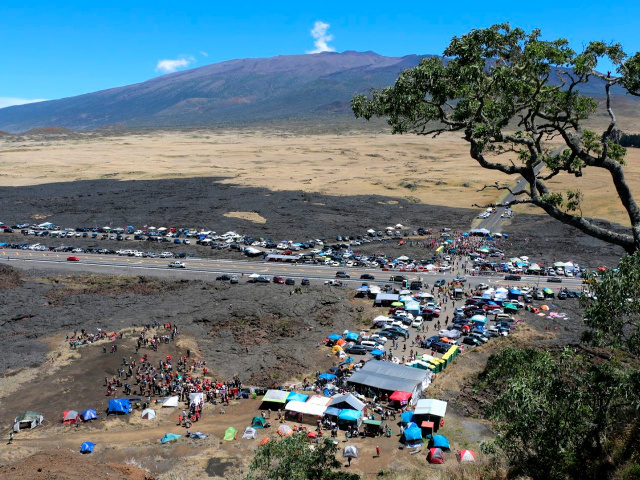Scientists and engineers should be in the process of building a state-of-the-art telescope atop the inactive volcano Mauna Kea on Hawaii’s Big Island.
But the Thirty Meter Telescope project poses a threat, say native Hawaiians, who have opposed it since it was first proposed, as CNN reported in 2015:
To native Hawaiians, the dormant volcano is the most sacred land in the entire Pacific. It is the point where the sky and earth meet. They believe it is the site of the genesis of their people, and it is the burial ground for their most revered ancestors. Considered a temple and a house of worship, native Hawaiians believed the gods created Mauna Kea for them to ascend to the heavens.
To scientists, the mountaintop is the best location in the world to observe the stars and study the origins of our universe.
Fast forward to 2019 when construction was to begin on the $1.4 billion telescope, and hundreds of protesters, or self-described protectors, have blocked the road to the site.
CNN reported on Monday:
Kaho’okahi Kanuha, a leader of the [protest] group, told CNN on Sunday that organizers believe more than 2,000 people have assembled at the Mauna Kea access road, where they’ve built a makeshift camp and blockade in hopes of preventing construction from getting underway.
It’s a conflict years in the making. Scientists see Mauna Kea as a prime location for peering into the deep reaches of space. But for some native Hawaiians, the dormant volcano, the highest peak in Hawaii, is sacred ground.
The barren landscape is rich with their history and is believed to be the site of the genesis of the Hawaiian people. Many of their revered ancestors are buried there.
“It is without a doubt one of our most sacred places in all of Hawaii,” Kanuha told CNN.
Kanuha told CNN it was home to sacred waters and native Hawaiian deities.
CNN noted that the land on which the summit is located is considered “ceded land,” meaning that it is held in trust for native Hawaiians and future generations.
“We are taking a stand not only to protect our mauna and aina, our land, who we have a genealogical connection to,” Kanuha said. “We are fighting to protect it because we know if we cannot stop this, there is not very much we can fight for or protect.”
“This is our last stand,” Kanuha said.
Scott Ishikawa, spokesman for the telescope project, said in a statement:
We recognize that people have expressed strong emotions about that, and we regret that. We’ve been part of the Hawaii Island community for over 10 years, and we have tried to do the right thing, with consideration for the environment, the culture, the economy and the future of Hawaii Island. But we know that TMT has become a symbol for larger issues within the native Hawaiian community. While we haven’t been privy to the State’s security or enforcement plans, like everyone else in Hawaii, we want to find a way forward that is safe for everybody.
CNN reported that Hawaii Gov. David Ige signed an emergency proclamation to “give law enforcement increased authority to manage the situation,” and that at least 33 protesters had been arrested.
The Thirty Meter Telescope International Observatory website describes the vision and mission of the project:
TIO’s collaborative model which has engaged the world’s talent and intellect has revolutionized our understanding of our universe and therefore our understanding of ourselves and our place in it. The model has been adopted as an inclusive and scientific approach to address some of the world’s most complex scientific, philosophical, technological, and practical problems.
For tens of thousands of years humans have looked upward and tried to find meaning in what they see in the sky, trying to understand the context in which they and their world exists. As our level of knowledge grows, the next level of questions that arise require facilities with even greater capabilities to gather the observations needed to answer them. With each incremental step in capability, the resulting new questions require an even larger step in capability in order to be answered.
No single university, no single country, not even a whole continent has the knowledge and technological resources to build these facilities. Recognizing this, astronomers from the US, Canada, China, India, and Japan, joined together to answer the key questions about the structure and evolution of the universe and to explore the enigmatic processes, environments and bodies that encompass the universe. Each of the countries is an intellectual partner in the endeavor, as well as bringing technical expertise. In some cases, partners have long experience in constructing telescopes and this effort will build on those past successes and lessons. In every partner’s case, it is anticipated that technology and techniques will emerge that partners can share and apply for other efforts in their respective countries.
Follow Penny Starr on Twitter.

COMMENTS
Please let us know if you're having issues with commenting.